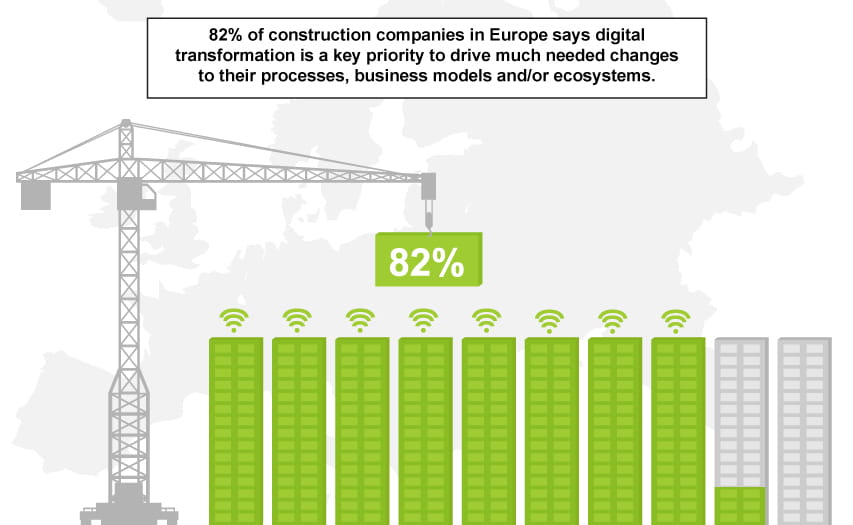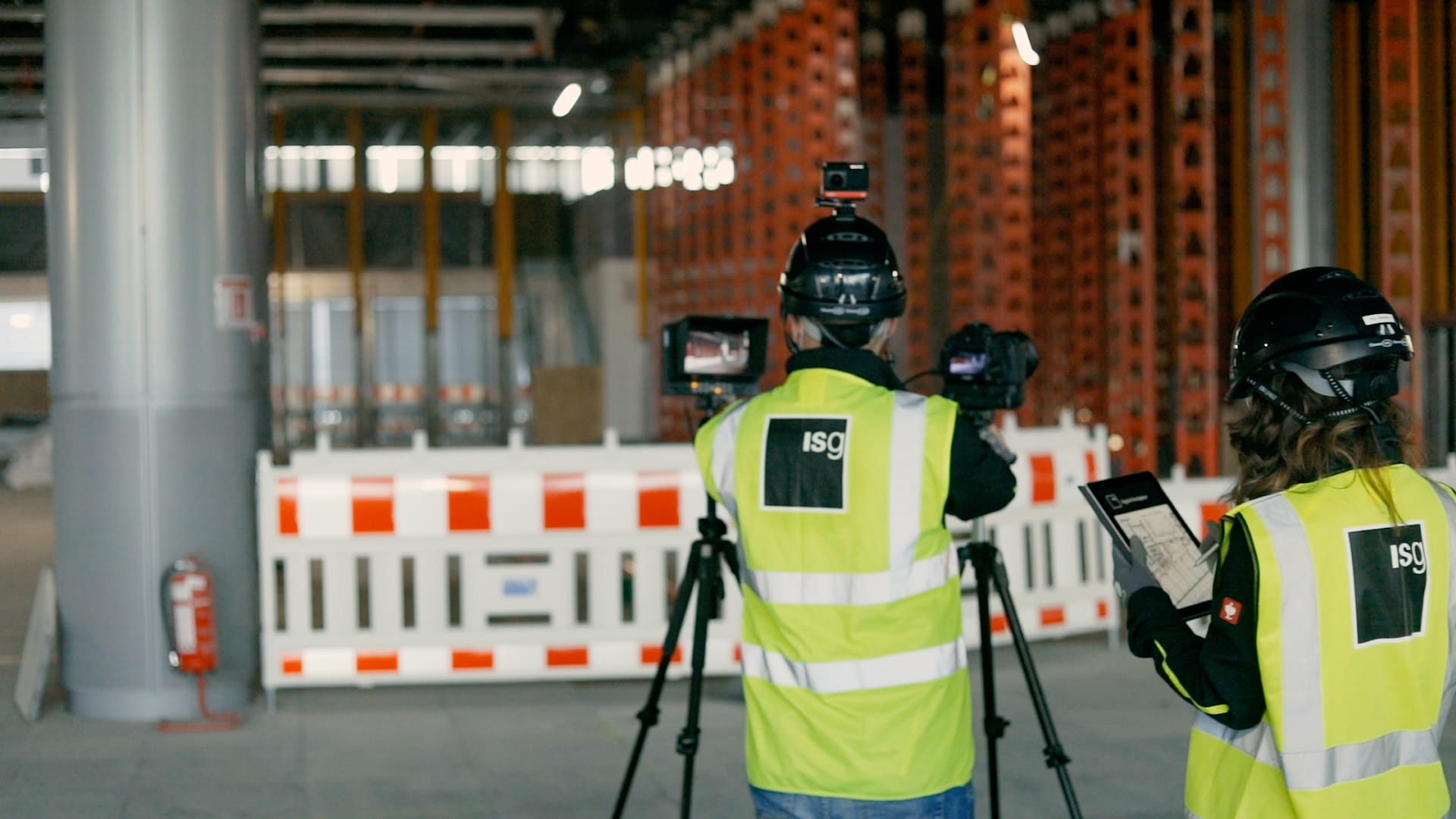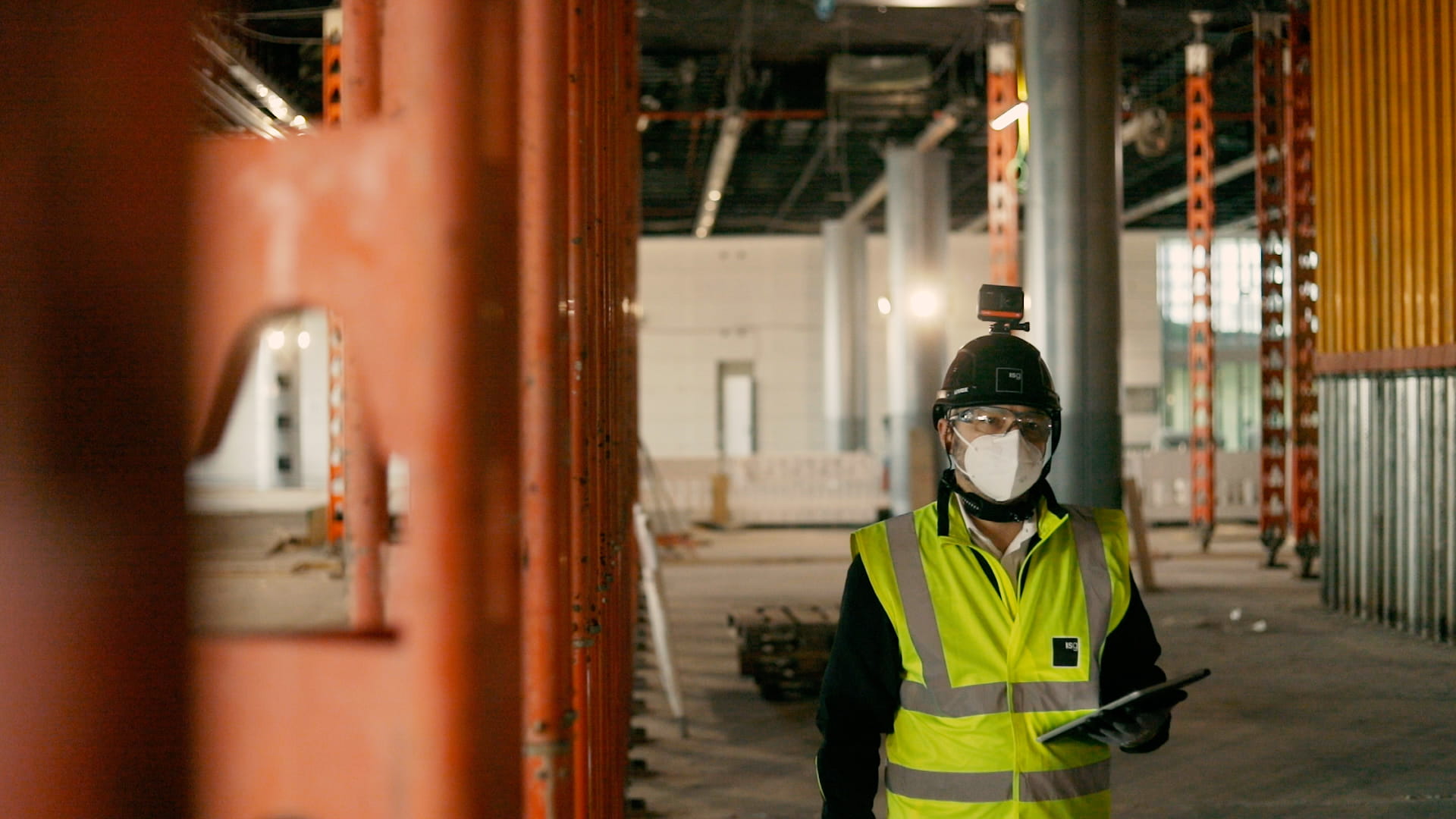

Build digitally - think ahead
Digitisation paves the way for innovation. Digital advancements present a wide range of opportunities, whilst having a noticeable impact on the way we live and work. However, today's innovations may well be obsolete tomorrow, so digital and innovative companies will have to keep pushing the boundaries to stay ahead. This requires courage and the desire to change and continually evolve.
#digibuild
Team meetings via online platforms, virtual tours, digital planning tools – digital advancements are not only revolutionising the way we work, but the way we live our everyday lives. Real opportunities lie ahead for agile companies that can adapt, responding quickly and flexibly to new circumstances - the same companies that have long since adapted to the digital world. Technology companies have been doing this for many years; they have taken advantage of developments to become digital pioneers. To be one step ahead digitally, above all you need a smart, agile team that has innovation routed in its DNA and drives change. Whoever digitizes wins.
“We always strive to be at the forefront of our industry and are working on making supply chains increasingly efficient. Thanks to new technologies, we are able to optimize and streamline our construction processes and hand over projects to our customers even faster. If technology, creativity and agility are embedded at the core of their corporate culture, a company will emerge stronger from critical situations.”
Aydin Karaduman, Managing Director Europe
Digital technology is the key to elevating working environments to the next level and setting new standards for efficient construction processes. Where innovation and digitalisation already existed as part of an organisations DNA, the current crisis has further catalysed the development of mechanisms that create a resource-saving and sustainable business environment.
Digitalised construction companies thus become partners at eye level who can realise future-oriented projects with both the right expertise and mindset. This requires investment in their own people and a willingness to engage in lifelong learning. It is also crucial to continually develop and test digital tools and learn from them, anticipating and driving ongoing developments to further drive efficiencies. Companies that do not continue to invest and adapt, positioning themselves within the digital, technologically enabled world will lose the race in the long run.

Source: IDC-InfoBrief on the topic „Digital Transformation: The Future of Connected Construction“, July 2020
Making processes more efficient and transparent
The ambition of digitised construction companies should be to simplify and accelerate the entire planning and construction process. The focus here is not only on internal operational processes, but above all on the customers - clients and developers as well as architects and planners. Times of crisis can be used to test digital solutions even more intensively: With the aid of simple but powerful tools, construction companies have the capability to automatically document their sites and share the results with people outside the construction site. This affords clients, customers and consultants the freedom to monitor projects regularly from a distance. Networking and seamless communication, optimal resource planning, efficiency, planning and scheduling reliability as well as timely identification of sources of error are just some of the advantages that can be leveraged.
“For years we have been driving technological innovation. We expect our service providers to follow this path as well - we want partners at eye level who understand our philosophy and are open to change.”
Leading US software company
Digital tools enable a safe and reliable workflow and bring may practical benefits. Building contractors, architects or site managers can save valuable time from on-site inspections and the risk of project delays come down to a minimum. Live data is collected using various methods and record the live progress of sites. This enables increased accuracy when forecasting the future course of the project as well as a dynamic response to potential shortages of material. All pertinent visual information is made available to project stakeholders to enable them to make quick, well informed decisions. Digital tools also support logistics as they help ensure that deliveries to the construction site can be timed with a high degree of accuracy. This in turn saves on-site storage space and costs as well as costly working time. The use of digital tools also makes the work process more transparent: The complete construction process can be monitored and documented. In this way, we optimise cooperation, developing a cohesive interface between all project participants, with complete transparency about the current status at all times.
Looking to the future, the challenge will be to ensure that all parties on a construction site are utilising the available tools and processes, to deliver increasing benefits to the customer. Only with like-minded subcontractors and strong partners is it possible to adapt to changes of process and emerge from times of upheaval stronger than before.
Tools that enable the creation of 3D models of sites allow for a reduction of people presence on-site, and they also ensure faster planning and effective documentation.
For the fit out project for an international coworking provider in Frankfurt, we use a webcam developed by startup Oculo mounted on the construction helmet, which generates a 360-degree view of the site, taking pictures independently during the inspection. Other systems, such as Matterport, which we have previously used on projects, work simply via app. The images are fed into the cloud and produce a 3D model of the entire construction site based on digital floor plans. In this way, everyone involved in a project can get a clear view, even from a distance. Another example is the Berlin-based company Plan3D. ‘As-built’ plans and site inspections form the starting point for a 3D model of an existing building. A point model of the building is created by laser scanning, which is then assembled to the finished model by the respective planning software - e.g. AutoCAD. This is another tool which we employed for our Microsoft project in Berlin, among others.

Cost and time savings
The cost and time savings achieved by digital construction are also vast; whereas previously it might have taken several people multiple days recording the data, thousands of square meters of construction area can now be digitally documented reliably and cost-effectively with little effort. The precise documentation also removes the probability of subsequent complaints, improving the management of defects significantly. Modern construction companies in touch with the latest trends in digitalisation include virtual inspections as standard in their offers - naturally at no extra cost for the client.
“Digital tools for the creation of 3D models offer an enormous added value for us. We have to be on site much less frequently, saving a significant amount of time, personnel and travel expenses. When taking an inventory before and after demolition, we save time and costs for capturing. Instead, we carry out inspections online and can use the expertise of our teams where it is really needed.”
International technical service provider
Digital tools have long been available and offer considerable potential for all areas of the construction industry - for faster planning, better-designed buildings and on-time handovers. Of course, digitalisation is based on technology, but that alone is not enough. People play an equally important role. Only an open and equal partnership approach between all those involved will lead to long-term success. It's about making the best possible use of the strengths of the project teams and creating an environment in which innovation is an integral part of the process and driven forward. In this way, the teams can identify challenges and problems in a timely manner and collaborate to build solutions together. The door to digitalisation is wide open - only companies that seize this opportunity will thrive in the market in the long term.

If you would like to speak to ISG about any requirements you may have, please let us know by writing an email to digibuild@isgltd.com or filling in the form below.

